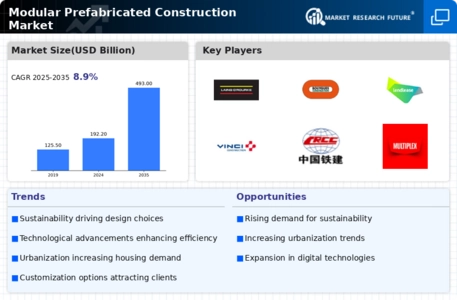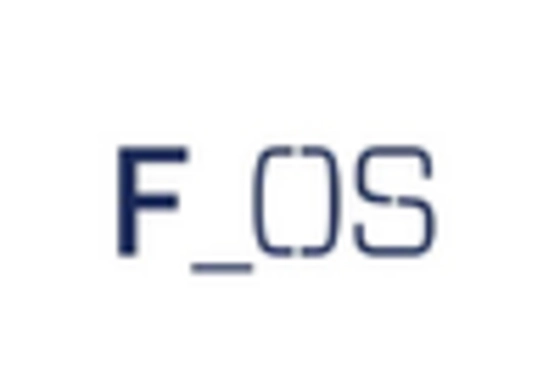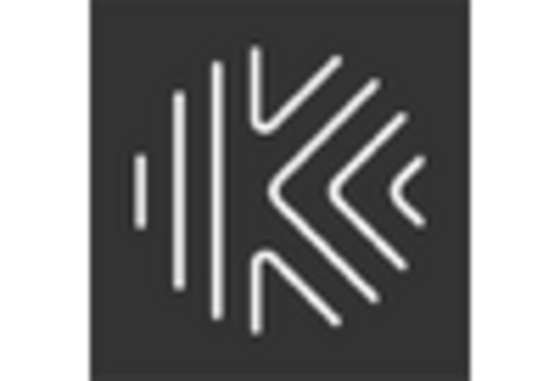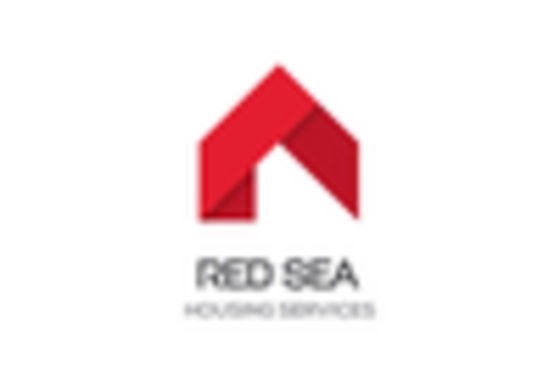Cost Efficiency
The Modular Prefabricated Construction Market is increasingly recognized for its cost efficiency. By utilizing prefabricated components, construction projects can reduce labor costs and minimize material waste. Reports indicate that modular construction can lead to savings of up to 20% compared to traditional building methods. This cost advantage is particularly appealing in regions facing housing shortages, where budget constraints are prevalent. Additionally, the speed of construction associated with modular techniques allows for quicker project turnover, further enhancing financial viability. As developers seek to optimize budgets while meeting growing demand, the cost efficiency of modular prefabrication becomes a compelling driver in the market.
Regulatory Support
Regulatory support is emerging as a significant driver within the Modular Prefabricated Construction Market. Governments are increasingly recognizing the benefits of modular construction in addressing housing shortages and promoting sustainable building practices. Incentives such as tax breaks and streamlined permitting processes are being introduced to encourage the adoption of modular techniques. Additionally, building codes are evolving to accommodate and promote modular construction methods, further legitimizing their use. As regulatory frameworks become more favorable, the modular construction sector is likely to experience accelerated growth, positioning it as a mainstream option in the construction landscape.
Urbanization Trends
Urbanization trends are a critical driver for the Modular Prefabricated Construction Market. As populations continue to migrate towards urban centers, the demand for affordable housing solutions intensifies. Modular construction offers a rapid response to this demand, enabling the swift development of residential units in densely populated areas. Reports indicate that urban areas are projected to house nearly 70% of the global population by 2050, creating an urgent need for innovative housing solutions. The ability of modular construction to deliver high-quality, cost-effective housing in a fraction of the time compared to traditional methods positions it as a viable solution to urban housing challenges.
Sustainability Initiatives
Sustainability initiatives are becoming a cornerstone of the Modular Prefabricated Construction Market. The emphasis on reducing carbon footprints and promoting eco-friendly building practices aligns with the increasing regulatory pressures for sustainable construction. Modular construction often utilizes recycled materials and generates less waste during the building process. Data suggests that modular buildings can reduce energy consumption by up to 30% compared to conventional structures. As stakeholders prioritize sustainability, the modular approach not only meets environmental standards but also appeals to a growing demographic of environmentally conscious consumers. This trend is likely to propel the market forward as sustainability becomes a key differentiator.
Technological Advancements
Technological advancements are significantly influencing the Modular Prefabricated Construction Market. Innovations such as Building Information Modeling (BIM) and advanced manufacturing techniques enhance the design and construction processes. These technologies facilitate precise planning and execution, reducing errors and improving overall project quality. Furthermore, the integration of smart technologies into modular units is gaining traction, allowing for energy-efficient and automated living spaces. As the construction sector embraces digital transformation, the modular approach appears to be at the forefront, potentially capturing a larger market share. The ongoing evolution of technology in construction is likely to drive further adoption of modular solutions.

















Leave a Comment